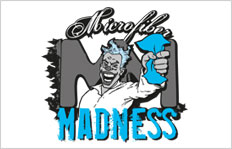Can Car Detailing Remove Surface-Level Scratches?
20th Apr 2022
Surface-level scratches on your car are unsightly. If they are deep enough they can even compromise the quality of your paint over time. It’s common for those interested in fixing these vehicle scratches to look into the world of detailing. For this reason, we’ve compiled a brief guide to help you figure out the effects of these imperfections, how to repair them, and what you can do to prevent them in the future.
How Do Surface-Level Scratches Affect My Paint?
Can car detailing remove surface-level scratches? Before we discuss the answer to that question, it’s prudent to understand how such imperfections affect the quality of your paint. Moreover, it’s crucial to explain why they need to be taken care of in the first place.
To start, your car’s paint and clearcoat protect it from accelerated weathering caused by things like inclement weather, road contaminants, and temperature changes. This protective finish on your vehicle also helps prevent damage from exposure to the damaging affect of landscapes, like snow, beaches, urban environments, and the particulates found in each.
And, indeed, scratches take away from the cosmetic appeal of your car. But more importantly, they can also compromise the longevity and quality of your paint over time. So, what can you do to fix it? Before asking how to fix it we should define what a scratch is. A scratch is not ON the surface but rather IN the surface.
How Do I Remove the Scratches Properly?
Luckily, there are ways to remove these imperfections from your paint safely.
- Compounding / Polishing is typically utilized when you have swirls or straight scratches. Swirls are created by using low quality towels to dry or detail. They can also occur when using dirty wash mitts, or dry wiping paint that is dirty.
- Filling the scratch is done using touch-up paint. This is typically utilized when a scratch is deep enough to feel with your fingernail or too deep to safely “level the clearcoat” in order to remove it.
Here is a little more info on these two primary methods you should use to ensure that you remove these imperfections adequately:
- Compounding or polishing (known by some as “buffing”) is the process of using an abrasive liquid to lower the level of clearcoat in which scratches and swirl marks (also known as spider webs) exist. This process is used on vehicles to restore the paint to an as new condition. However, heavy compounding and abrasive polishing should NOT be done on a regular basis. That is because you remove a small amount of your clearcoat each time you complete this technique. Using liquids that contain light abrasives, you can actually correct the paint to remove the scratches and get your surface back to a smooth, mirror finish. It is important not to use abrasive compounds very often and instead focus STRONGLY on proper wash and detailing techniques to avoid swirls and scratches almost completely moving forward!
- Filling with Touch up paint is a less aggressive way of correcting your surface level scratches. This scenario is called for when the scratch is what we call a RIDS or Random Isolated Deeper Scratch. For this technique this product called the Dr. Colorchip Kit is the simplest for the DIY and even many professionals.
These methods are most effective with the correct auto detailing tools. There is always the possibility that your scratch may be so deep, a repaint could be needed. This is usually the case if you can see the metal of your vehicle below the paint. If the scratch has penetrated the clear coat, color coat, and gone through the primer then the metal panel below will begin rusting or oxidizing as soon as moisture reaches it. If you are ever unsure, it’s always wise to get your vehicle looked at by a professional before polishing/buffing.
How Can I Prevent Scratches in the Future?
Once you successfully remove your surface-level scratches, you’ll want to do what you can to prevent these types of imperfections from happening again. Properly handwashing your car regularly with the correct tools is an excellent place to start to prevent swirls and scratches in the future.
You should also consider incorporating a protection step such as a wax, sealant, or ceramic coating into your detailing regiment. Doing this can help strengthen your paint long term and can help resist future damage. The most permanent solution would be to invest in a ceramic coating from a trusted professional! The benefits of adding any of these protectants to your vehicle is to further prevent damage to its surface as well as make your vehicle a breeze to clean and maintain!
So, can car detailing remove surface-level scratches? Luckily, the answer to that question is typically yes. And hopefully, this guide has provided you with some valuable information on how these types of blemishes can impact your paint and the proper methods for fixing and preventing them down the line.









